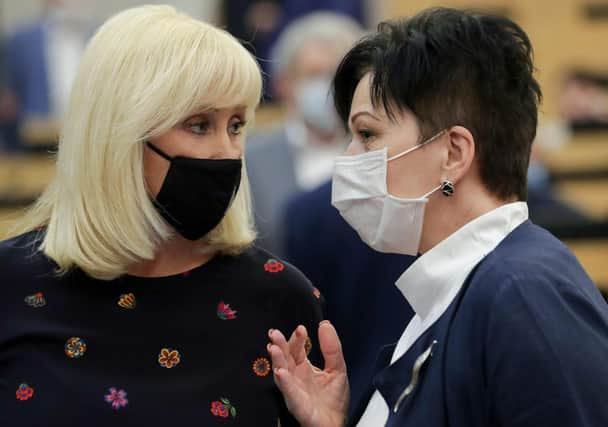Two-metre rule could lead to 'economic devastation'


Professor Robert Dingwall, a member of one of the sub-groups feeding into the Government’s scientific advisory group for emergencies (Sage), said that even if the distance was cut to one metre, there would still be a “safety margin” as it was “very rare” for virus particles to travel that far.
The UK Government has come under intense pressure from businesses and some Tory MPs to relax the rule, amid concerns it will make it unviable for some firms, especially pubs and restaurants, to reopen, even when they are allowed to.
Advertisement
Hide AdAdvertisement
Hide AdAnd former SNP MSP Andrew Wilson has also voiced opposition to the two-metre rule, writing on Twitter: “1m distancing rule: China, Denmark, France, Hong Kong, Lithuania, Singapore. 1.4m South Korea 1.5m Australia, Belgium, Germany, Greece, Italy, Netherlands, Portugal. What are they getting so wrong? Time to get the balance right!”
A study published in the Lancet found physical distancing of at least one metre lowers the risk of coronavirus transmission, but distances of two metres could be more effective.
The risk of infection when people stand more than a metre away from the infected individual was found to be 3 per cent, and 13 per cent if within a metre.
Professor Dingwall told BBC Radio 4’s Today programme it was a “problematic” study because it did not look at the economic consequences of having a larger distance requirement.
“I think it’s a question of relative risk.
“Even the problematic Lancet study that was published last week was really saying you’re moving from a tiny risk at two metres to a very small risk at one metre.
“You have to set that against all the other harms that are being done by the, the economic devastation that is wreaked by the two-metre rule, the deaths that will be attributable to the lockdown itself, and to the social and economic disruption that is causing.”
Professor Dingwall, a member of the new and emerging respiratory virus threats advisory group (Nervtag), added: “The work on transmission in naturally occurring environments suggests that it’s very rare for particles to travel much more than half a metre.
“So you have that, you have that safety margin which is built in.
Advertisement
Hide AdAdvertisement
Hide Ad“And actually, as you get closer to people, you do begin to invade on personal space.
“With the exception of some very specific environments, like the London Tube at rush hour, you don’t let people get back close to you, unless they are members of your household, children, romantic partners, people with whom you have a very close relationship.
“So there is a kind of natural boundary around people, and one metre is roughly double that.”
Business Secretary Alok Sharma was repeatedly questioned about the two-metre rule at the Downing Street press conference on Tuesday.
“When it is safe to do so, we will see whether you can move to a shorter distance, but ultimately we keep all of these things under review,” he said.
“There are other countries in the world that have moved from two metres to closer distances.
“Of course, they are further along in terms of their road map, in terms of opening up businesses.
“We are taking a cautious view on this. I completely understand why, for economic reasons, businesses will want to have a look at this two-metre rule.”
Advertisement
Hide AdAdvertisement
Hide AdThe latest debate comes as rail operators have called for one metre distancing and urged the UK Government to drop what they call its negative messaging about the risks of using public transport.
Train operators are preparing to increase services to near normal level at the start of next month.
Carriages can only accommodate between 10 and 20 per cent of passengers but due to social distancing commuters will have to travel off-peak or possibly endure long queues.
Comments
Want to join the conversation? Please or to comment on this article.